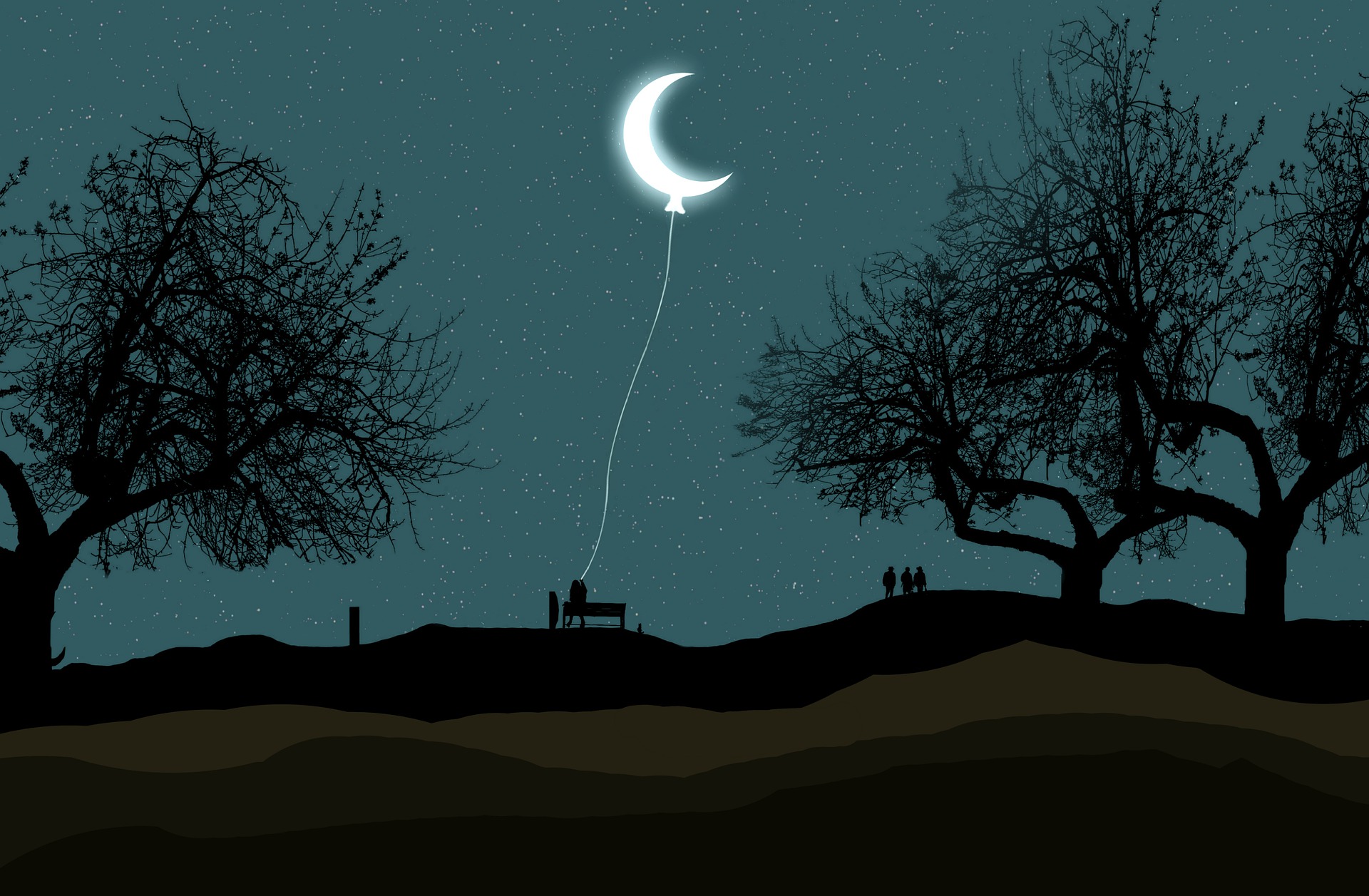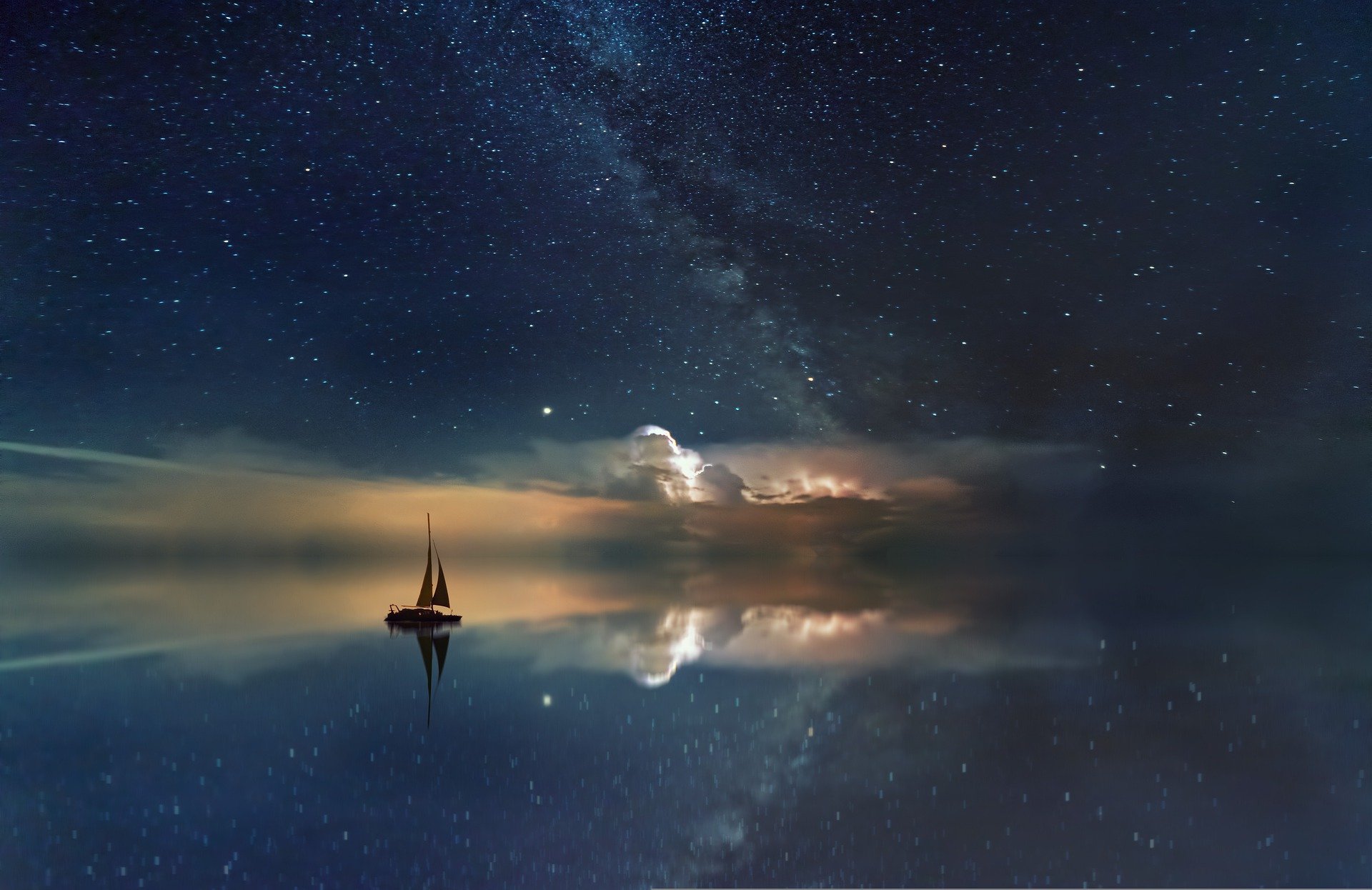Passion of the People – 1.1.1
The Fascination of the Stars
Humans have been mesmerized by the stars since the beginning of their existence. This fascination is documented throughout history from simple drawings in the caves of the Stone Age like those of the Neanderthals to the first people who tried to understand the stars from a fact-based context like Ptolemy, Copernicus, Galileo, and, leading to today’s research institutions such as the European Space Agency (ESA) or the US American National Aeronautics and Space Administration (NASA).
Since the beginning of human history the night sky has been admired. The stars in particular have been, and continue to be, an incomparable source of fascination. They have been many things: gods, fortune tellers, subjects of scientific exploration, religious symbols, and more still to come. Stars have been the source of myth, mystery, and legends and have influenced many aspects of life as we know it from religion to pop culture. They still are the origin of our calendar and basis for navigation.
For thousands of years the stars have been mankind’s companions. The stars in the night sky have been a motivation for discovering the universe, for space flights and last but not least science-fiction adventures reaching back to the 19th century in literature.
The natural night sky was always interesting for astronomers and meanwhile it is also for ecologists as it is also important for fauna and flora. Migrating birds and insects orientate themselves towards the stars, the growth of plants depends on the change of night and day. Even the health of humans is influenced by light pollution, e. g. our day/night rhythm. Behind them are complex processes whose interaction has become increasingly clear through research, but much is still a mystery, which contributes undiminished to the fascination of the stars. It is no longer a matter of course that the natural night sky can be seen everywhere on Earth. This is why dark sky parks are so important, to help us preserve the fascination of the stars and to enable research to unravel as much of the complexities as possible. Meanwhile, Dark Sky Parks can be found nearly on all continents of the earth with people working there and visitors enjoying an extraordinary environment during the night.

Further Resources
Links below will redirect you to external websites. In accordance with the European data protection declarations, we would like to point out that by clicking on these links you may send data to external providers. We cannot prevent that.
Images
![]() A huge number of pictures illustrating the fascination of stars is available at Pixabay for free
A huge number of pictures illustrating the fascination of stars is available at Pixabay for free
 Collezione foto cielo – 123RF
Collezione foto cielo – 123RF
 Immagini cielo notturno – shutterstock
Immagini cielo notturno – shutterstock
Videos
![]() 8 Best Places in the World for Star Gazing
8 Best Places in the World for Star Gazing
![]() A Guide for Beginners & What to Take With You To Watch The Night Sky
A Guide for Beginners & What to Take With You To Watch The Night Sky
![]() The American photographer Michael Shainblum captures Mesmerizing views of the night sky
The American photographer Michael Shainblum captures Mesmerizing views of the night sky
 Die Faszination der Sterndeutung
Die Faszination der Sterndeutung
 Le stelle – HUB Scuola
Le stelle – HUB Scuola
 Cos’è l’inquinamento luminoso? – Play RSI
Cos’è l’inquinamento luminoso? – Play RSI
 Inquinamento luminoso: quanto nuoce alla salute? – RaiPlay
Inquinamento luminoso: quanto nuoce alla salute? – RaiPlay
Online Resources
![]() This link offers access to essays about different topics related to the stars
This link offers access to essays about different topics related to the stars
![]() 10 popular assumptions and correcting them by scientific results
10 popular assumptions and correcting them by scientific results
![]() Best star-gazing books of all time
Best star-gazing books of all time
![]() Astronomy from the Renaissance to the mid-twentieth century (UNESCO)
Astronomy from the Renaissance to the mid-twentieth century (UNESCO)
 Cieli bui, dove trovarli? – Valentina Guglielmo INAF
Cieli bui, dove trovarli? – Valentina Guglielmo INAF
 E luce fu, nel cielo notturno – Matteo De Giuli INAF
E luce fu, nel cielo notturno – Matteo De Giuli INAF
 L’astrofisico. «Il fascino delle stelle e la religiosità» – Antonio Giuliano
L’astrofisico. «Il fascino delle stelle e la religiosità» – Antonio Giuliano
 L’uomo e le stelle – Istituto e Museo di Storia della Scienza, Museo Galileo
L’uomo e le stelle – Istituto e Museo di Storia della Scienza, Museo Galileo
 10 luoghi da cui vedere il cielo stellato, in Italia e nel mondo – Luca Nardi WIRED
10 luoghi da cui vedere il cielo stellato, in Italia e nel mondo – Luca Nardi WIRED
 La mappa globale dell’inquinamento luminoso – Le Scienze
La mappa globale dell’inquinamento luminoso – Le Scienze
 Il Mondo è troppo illuminato e non vediamo più le stelle. E anche la nostra salute è in pericolo – Maria Rita Montebelli
Il Mondo è troppo illuminato e non vediamo più le stelle. E anche la nostra salute è in pericolo – Maria Rita Montebelli
 Inquinamento luminoso: ne soffrono gli animali, le piante, il mare e persino l’uomo che non riesce più “a rivedere le stelle” – TerzoMillenio
Inquinamento luminoso: ne soffrono gli animali, le piante, il mare e persino l’uomo che non riesce più “a rivedere le stelle” – TerzoMillenio
 Guardare le stelle fa bene alla nostra salute fisica e mentale: ecco tutti i benefici – MeteoRed
Guardare le stelle fa bene alla nostra salute fisica e mentale: ecco tutti i benefici – MeteoRed
Further Readings
![]() SkyatNight – online magazine: The best astronomy books and space books available in 2022 (BBC)
SkyatNight – online magazine: The best astronomy books and space books available in 2022 (BBC)
![]() Best astronomy books. (livescience.com)
Best astronomy books. (livescience.com)
![]() Books representing the fascination of stars..
Books representing the fascination of stars..
Teaching Material
![]() Astrobites – Daily astrophysical literature journal made by undergraduate students
Astrobites – Daily astrophysical literature journal made by undergraduate students
![]()
 Mixed teaching material on stars and astronomy.
Mixed teaching material on stars and astronomy.
For Kids
![]() Books for kids – illustrated tours into the night sky
Books for kids – illustrated tours into the night sky
![]() Learning and teaching material specifically for kids about stars
Learning and teaching material specifically for kids about stars

